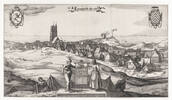De dominante staat. De Gentse opstand (1449-1453) in de negentiende en twintigste-eeuwse historiografie
DOI:
https://doi.org/10.18352/bmgn-lchr.5968Keywords:
Revolt, Historiography, imageAbstract
The dominant state. The Gent revolt (1449-1453) in nineteenth and twentieth century historiography
In this survey of the historiography of the Gent revolt (1449-1453), the author argues that the position adopted by historians in the nineteenth and twentieth century was largely determined by their own views about government. The romanticists, in their historical accounts, reflected their own time, namely the legitimate resistance of Dutch freedom-fighters against a Francophone oppressor. While nationalistic positivists regarded revolts as a threat to the mediaeval state they adored. In the face of tumultuous events, post-war historians identified undemocratic values in the contemporary constitution and subsequently abandoned the legitimizing discourse of the ‘modern state’. As a result of the tendency in twentieth-century politics towards more consultation and more spectacle, late-mediaeval street violence was assessed in a more positive light. Ritual violence was seen as a social action. The author concludes that the historians’ opinion about the violence executed by the government as well as the collective action of the subjects was dominated by their view of the state under which they themselves were living.
Downloads

Downloads
Published
How to Cite
Issue
Section
License
Authors who publish with this journal agree to the following terms:
a) Authors retain copyright and grant the journal right of first publication with the work simultaneously licensed under a Creative Commons Attribution 4.0 International (CC BY 4.0) that allows others to share the work with an acknowledgement of the work's authorship and initial publication in this journal.
b) Authors are able to enter into separate, additional contractual arrangements for the non-exclusive distribution of the journal's published version of the work (e.g., post it to an institutional repository or publish it in a book), with an acknowledgement of its initial publication in this journal.
c) Authors are permitted to post their work online (e.g., in institutional repositories or on their website) prior to and during the submission process.
Authors are explicitly encouraged to deposit their published article in their institutional repository.










